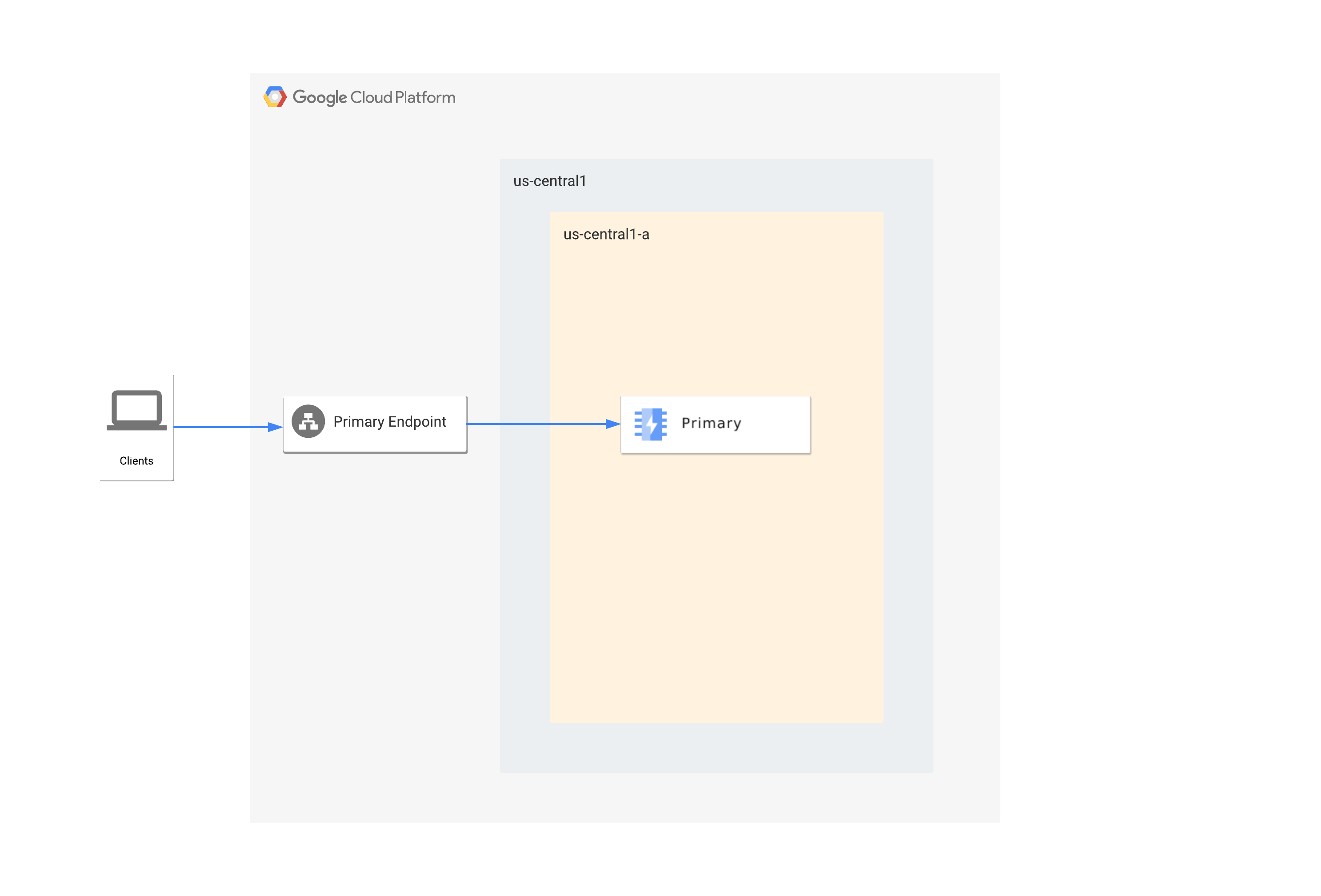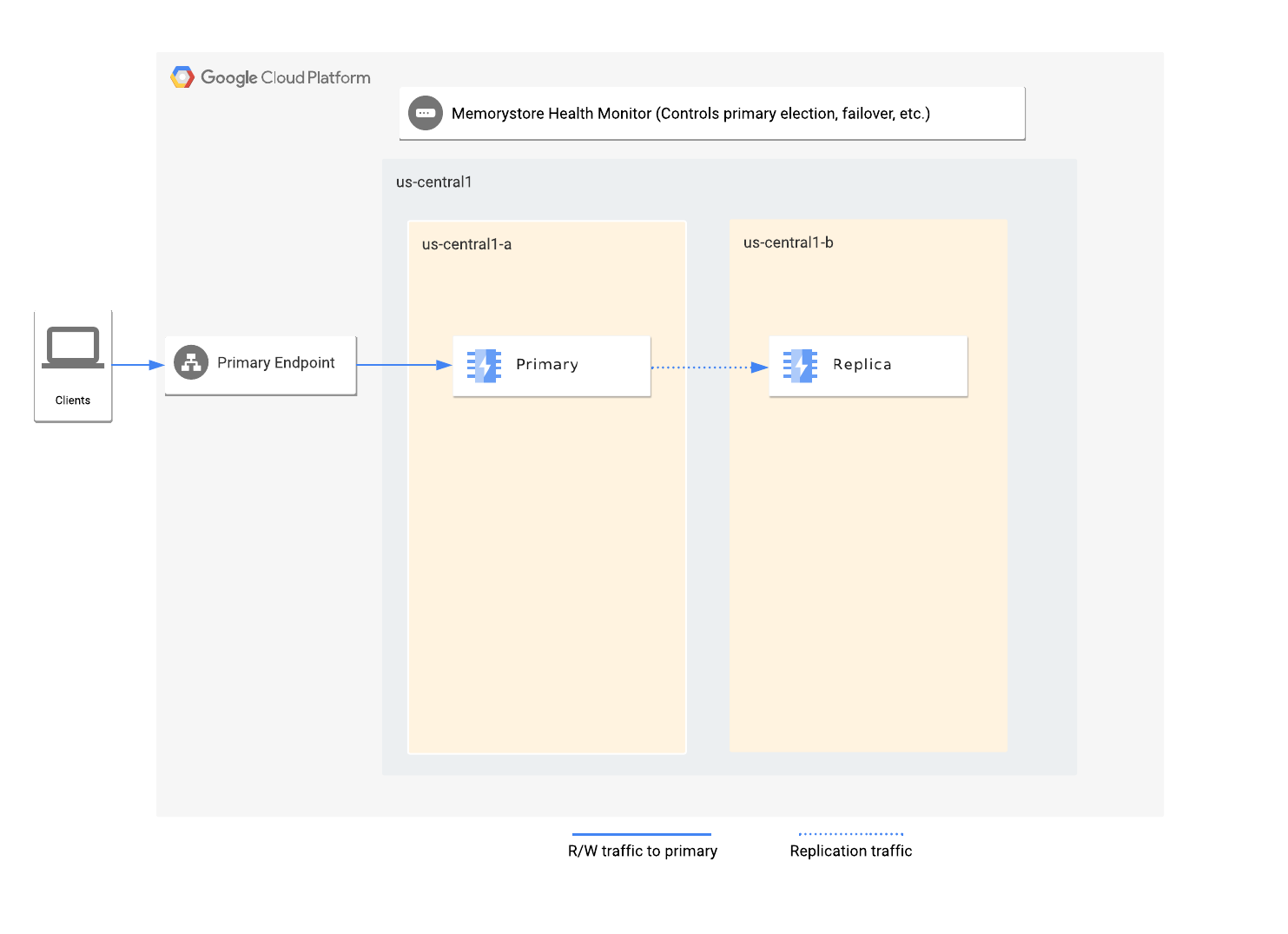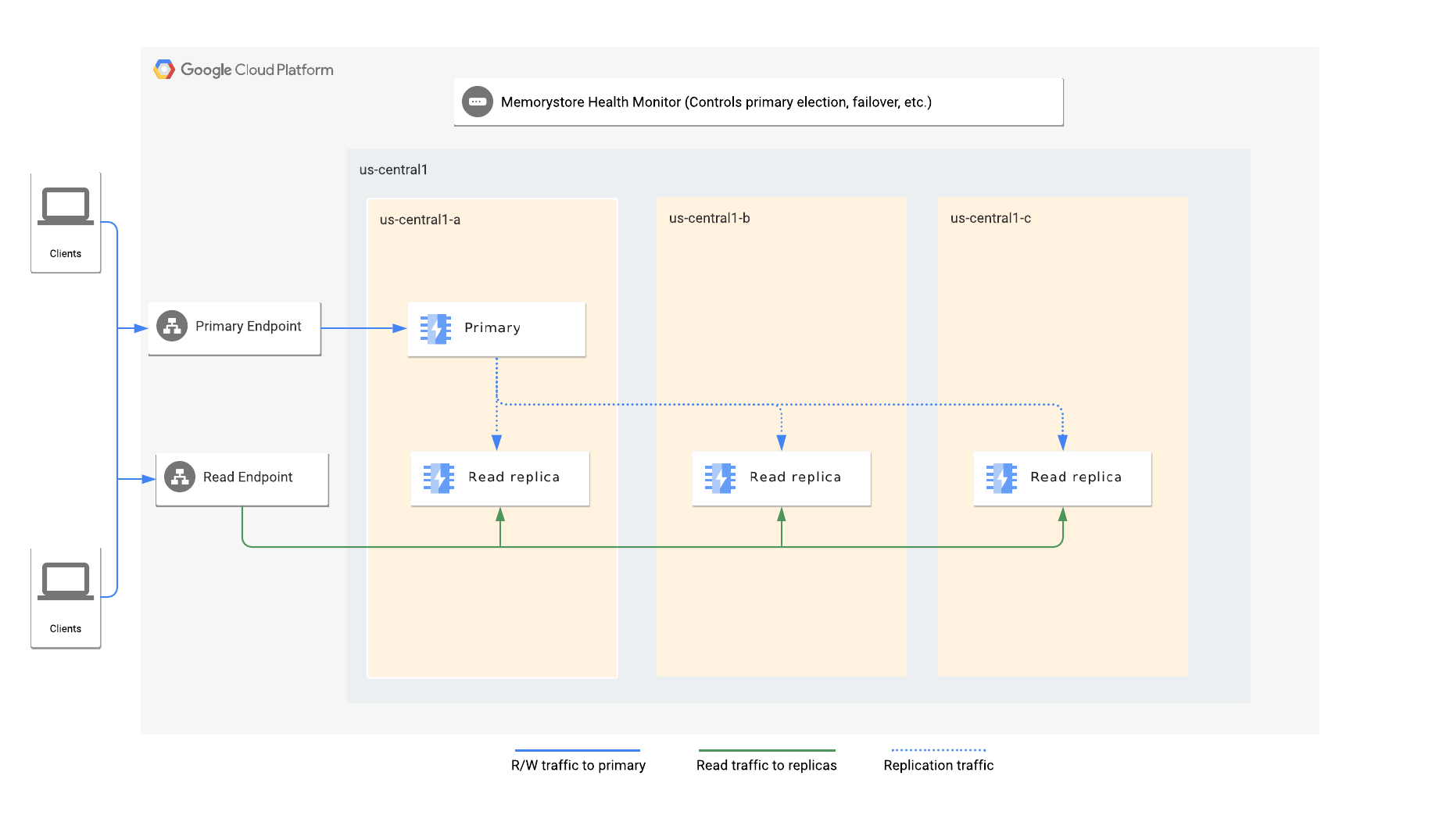This page describes the differences between the available Redis tiers.
Memorystore for Redis supports Basic and Standard Tiers. The Basic Tier is best suited for applications that use Redis as a cache and can withstand a cold restart and full cache flush. Standard Tier instances provide High Availability using replication, read replicas, and automatic failover.
It is not possible to upgrade from Basic Tier to Standard Tier or the other way around. If you want to move data from an existing Basic Tier instance to a new Standard Tier instance, use import and export to move your data.
Tier architecture
The following diagrams show the architectures for the Memorystore for Redis service tiers.
Basic Tier

- One Redis node
- Ephemeral cache
Standard Tier

- Provides High Availability with replication
- Fails over to replica in the case of primary node failure
Standard Tier with read replicas

- Provides High Availability with replication
- Read replicas allow for distributed reads
Feature comparison
| Specifications | Basic Tier | Standard Tier (read replicas disabled) | Standard Tier (read replicas enabled) |
|---|---|---|---|
| Description | Provides a cache with no replication | Provides redundancy and availability using replication | Provides redundancy and availability using replication to backup data, and multiple Read replicas to increase read throughput |
| Max Redis primary size | 300 GB | 300 GB | 300 GB |
| Max network bandwidth | 16 Gbps | 16 Gbps | 16 Gbps total for writes. 16 Gbps per node for reads.1 |
| I/O threads | Yes2 | Yes2 | Yes2 |
| Scale primary size | Yes | Yes | Yes |
| Scale number of read replicas | No | No | Yes |
| Cross-zone replication | No | Yes3 | Yes3 |
| Automatic failover | No | Yes | Yes |
| Read replicas | No | No | Yes |
| In-transit encryption | Yes | Yes | Yes |
| Maintenance window | Yes | Yes | Yes |
| Cloud Monitoring | Yes | Yes | Yes |
1 The maximum write throughput is 16 Gbps. Read throughput is dependent on the number of nodes (read replicas) in the instance, including the primary node. For example, if you have an instance with 1 primary node and 2 read replicas, the total read throughput is 48 Gbps.
2 I/O threads are only available on M3 instances or higher running Redis version 6.x. For more information, see Redis version 6.x.
3 For more information about region-specific considerations, see Geography and regions.
